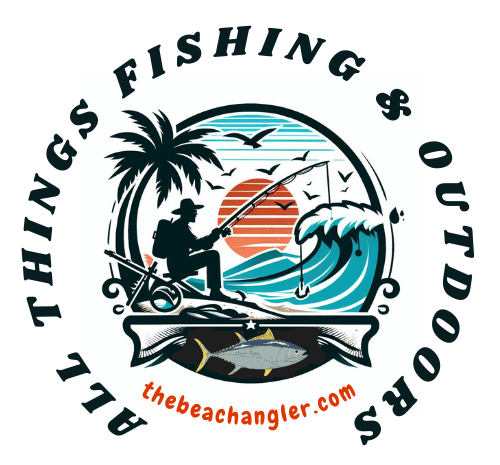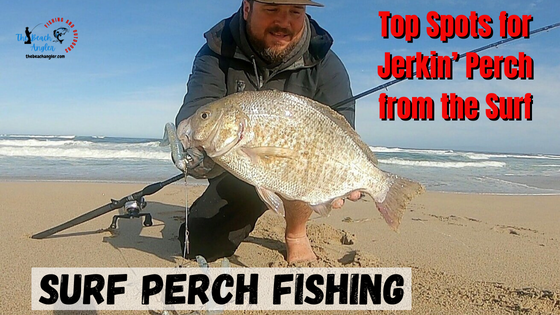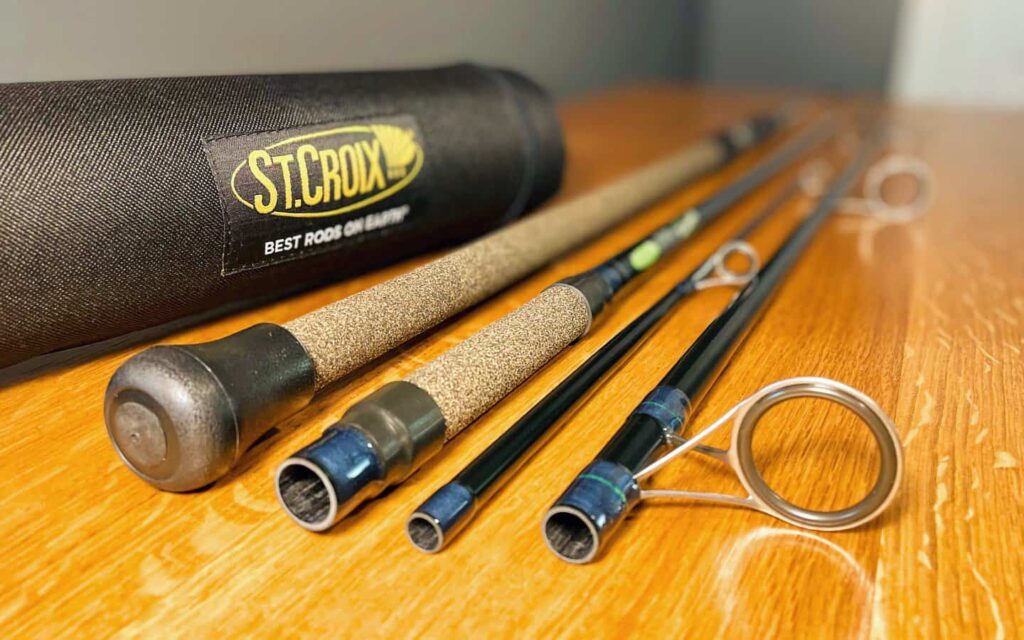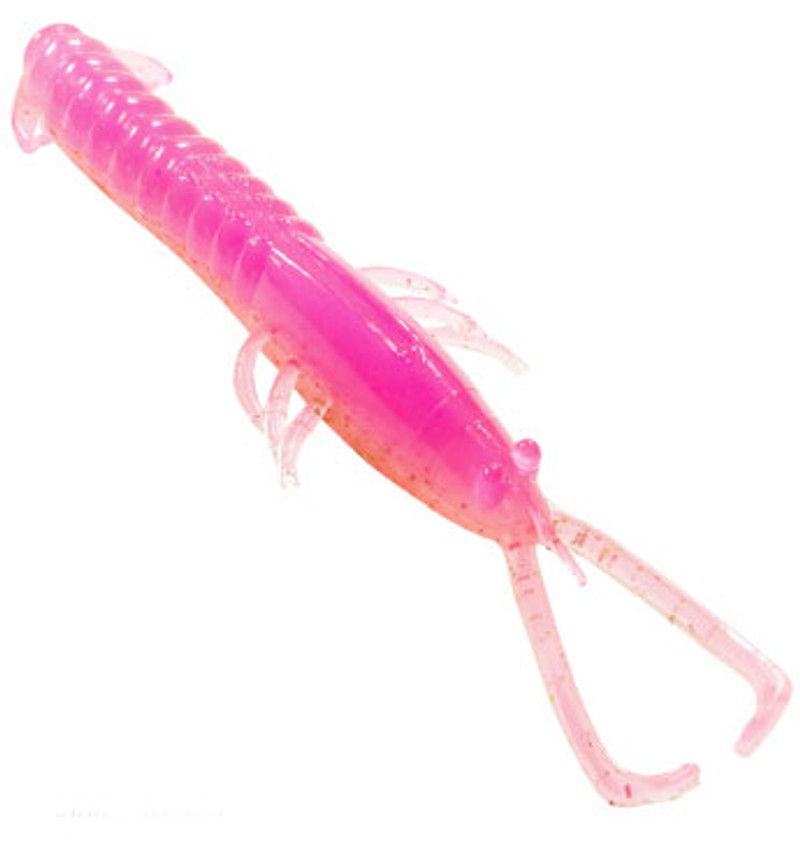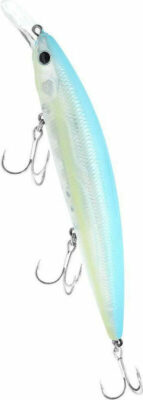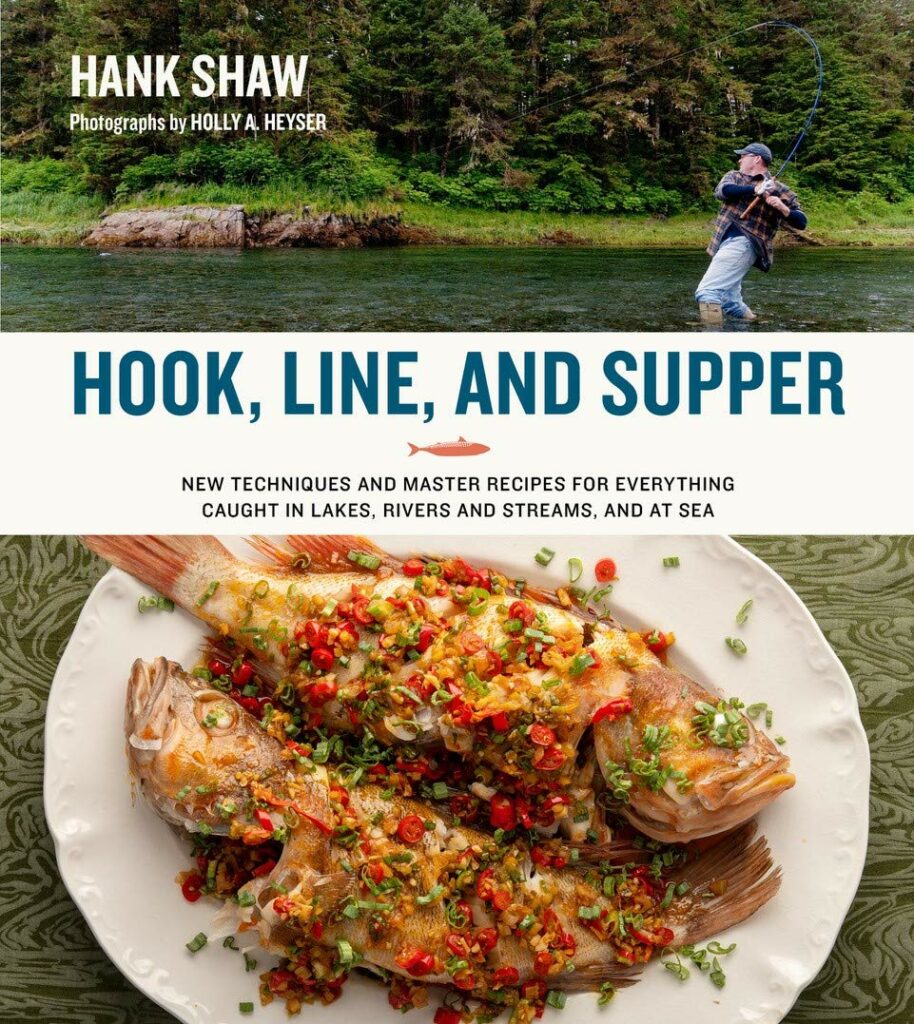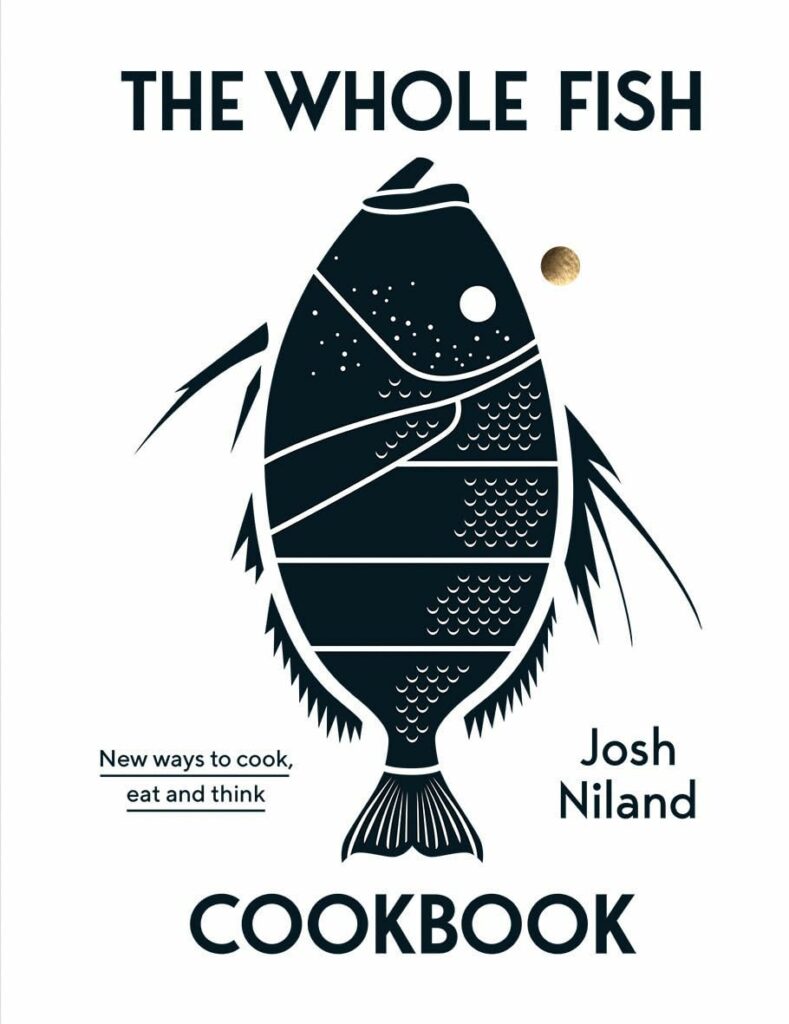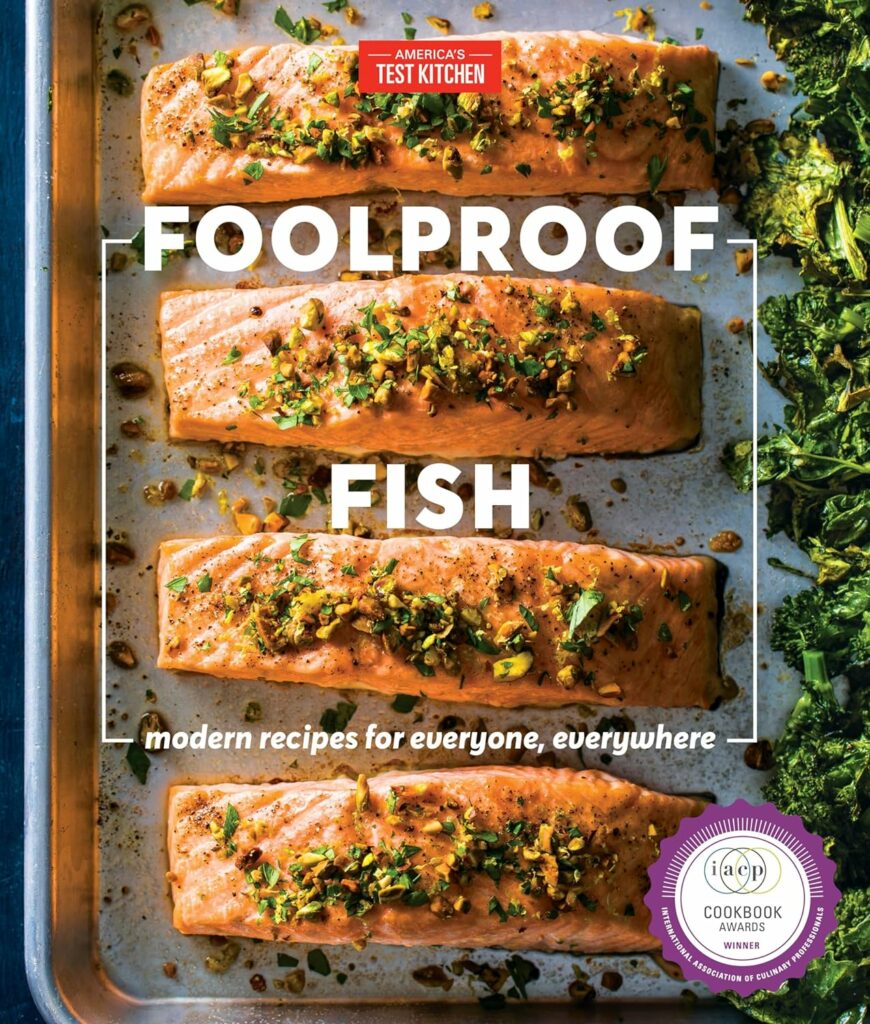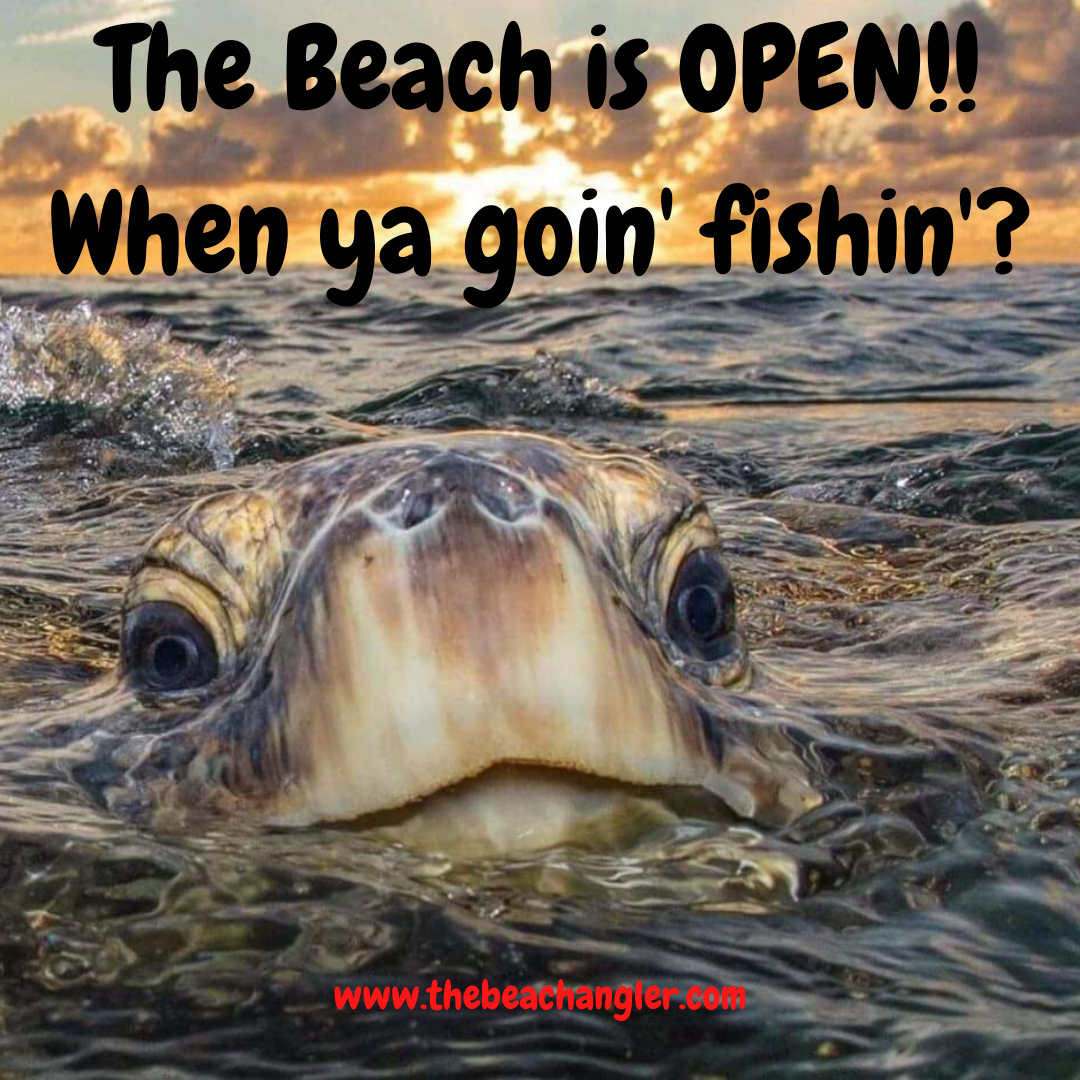If you live on the West Coast of the US, you are probably familiar with surf perch. Surfperch fishing is a fun and popular sport that can be enjoyed year-round, in many coastal areas, by anglers of all skill levels. Surf perch are small, colorful fish that live in the surf zone of sandy or rocky beaches. The primary surfperch species are the barred surf perch, redtail surfperch, and silver surfperch.
Key Takeaways
- Surf perch fishing is a popular sport that can be enjoyed year-round.
- Understanding surf perch is key to successful fishing.
- By learning more about surf perch and their habits, you can increase your chances of catching these fish and having a successful day on the water.
- If you’re looking for an exciting and accessible fish to catch, surf perch may be the perfect choice.
They feed on crustaceans, worms, and small fish that are stirred up by the waves. These fish are abundant, accessible, and aggressive, making them a great target for surf anglers. As and added bonus, they are great eating as well. Surf perch fishing tackle is relatively simple. All you need is some basic gear, such as a rod, reel, line, hooks, and bait.
However, if you’re new to surf perch fishing, it’s important to learn the basics of the sport, including the best equipment to use, the most effective techniques and strategies, and the safety precautions you need to take while fishing in the surf.

Understanding Surf Perch

These fish are members of the surfperch family and can be found in sandy areas along the Pacific coast of North America.
They are typically between 6 and 12 inches long and weigh between 1 and 2 pounds.
Surf perch are a type of sea perch that are known for their aggressive nature and willingness to take a variety of baits and artificial lures, making them a popular target for surf anglers.
By learning more about surf perch and their habits, you can increase your chances of catching these fish and having a successful day at the beach. Come along and we’ll give you an overview of surf perch, including their species, habitat, and distribution.
Species Overview
Surf perch are a group of fish that belong to the family Embiotocidae. There are several species of surf perch, including the redtail surfperch, barred surfperch, and silver surfperch. These fish can range in size from just a few inches to over a foot in length, depending on the species.
One of the most distinctive features of surf perch is their coloring. Many species have bold stripes or spots on their bodies, which can make them easy to identify. They also have a unique shape, with a round body and a small mouth.
Surfperch are viviparous (livebearers). This means that fertilization is internal and embryos are nurtured and developed inside of the female. They usually produce between 1 to 113 live young per litter. The young are released as fully-formed miniature versions of the adults.

Habitat and Distribution
Surf perch are found in the surf zone along the Pacific coast of North America, from southern California to British Columbia. They are typically found in shallow water, where they feed on small crustaceans, worms, and other invertebrates.
Surf perch prefer sandy or rocky beaches with plenty of wave action. They can often be found in areas where there are troughs or dips in the sand just offshore. These areas provide cover for the fish and allow them to move between pockets of deeper water.
In general, surf perch are most active during the summer months, when water temperatures are warmer. However, they can be caught year-round, and many anglers enjoy fishing for them in the winter months when other species are less active. Surf perch are a fun and challenging fish to catch, and they can provide hours of entertainment for surf anglers of all experience levels.
Surf Perch Fishing Seasons
Although surf perch are available year-round, the most productive time to fish for them is in the spring and early summer when they school up along sandy shorelines for spawning. This is also the time when they are larger and more abundant. However, some species of surf perch may have different spawning seasons, so it is advisable to check your local fishing regulations before heading out.
Surf perch fishing is a year-round fishery, however the most productive time to fish for surf perch is during their spawning season in the spring and early summer. During this time, surf perch school up along sandy shorelines, making them easier to catch.

The best time of day to fish for surf perch is is an hour or two before, and through high tide, or during an incoming tide.
During these times, they come closer to the shore looking for food, making it easier for anglers to catch them. Low tides are a great time to scout out beach structure to find good surf perch water.
Here is a breakdown of the surf perch fishing seasons:
| SEASON | TIMEFRAME | LOCATION | NOTES |
|---|---|---|---|
| Winter | December to February | Southern California | Fewer surf perch, but larger in size |
| Spring | March to May | Pacific Northwest | Peak season for surf perch fishing |
| Summer | June to August | Northern California | Smaller surf perch, but more abundant |
| Fall | September to November | Central California | Surf perch migrate south for the winter |
It is important to note that surf perch fishing seasons can vary based on location and weather conditions. For example, in Southern California, winter may be the best time to catch surf perch due to the larger size of the fish. In contrast, in the Pacific Northwest, spring is the peak season for surf perch fishing.
Regardless of the season, it is essential to have the right gear, bait, and techniques to catch surf perch successfully. Keep in mind that surf perch fishing regulations and limits may vary by location, so make sure to check local fishing regulations before heading out.
Equipment for Surf Perch Fishing
When it comes to surf perch fishing, having the right equipment is crucial to increase your chances of success. In this section, we’ll cover the three main types of equipment you’ll need: rod and reel, baits and lures, and other essential gear.
Rod and Reel
Choosing the right rod and reel for surf perch fishing is essential. You’ll want a rod that’s long enough to cast your line out past the waves and into the surf, but not so long that it’s difficult to control. A good length for a surf perch rod is between 7 and 9 feet but rods up to 12 feet are used when extra casting distance is needed, or there is a chance of hooking up with larger fish like striped bass.
For your reel, you’ll want something with a good drag system to help you reel in those bigger fish. A spinning reel is a good choice for surf perch fishing, as it’s easy to cast and control. There are different opinions on what is the best rod and reel setup for surf perch fishing, but here are some general guidelines and recommendations:
Rod: You will need a long (9- to 12-foot) rod that can handle a 2- to 6-ounce weight and cast far enough to reach the surf zone where the perch are. The rod should also have a medium heavy power and a medium or moderate action to handle the strong currents and waves of the surf. Some of the rods that are designed or recommended for surf perch fishing are the Okuma Rockaway, the Penn Squadron III, and the St. Croix Triumph.
Reel: You will need a spinning reel that is large enough to hold 200-300 yards of 15- to 30-pound monofilament line or 6- to 8-pound braided line. The reel should also have a fast gear ratio to help you retrieve your line quickly and a smooth drag system to prevent line breakage. Some of the reels that are suitable or recommended for surf perch fishing are the Penn Battle II, the Shimano Stradic FL, and the Daiwa Saltist MQ.
Line: You will need a light-weight, braided line for the castability and sensitivity, or a monofilament line for the stretch and abrasion resistance. The line should be between 6- and 30-pound test, depending on your preference and the size of the fish you are targeting. You will also need an 8-pound fluorocarbon leader for a subtle and finesse presentation. Some of the lines that are popular or recommended for surf perch fishing are the Power Pro Spectra, the Berkley Trilene Big Game, and the Seaguar Red Label.
Good Gear Setup for Surf Perch
These are some of the best rod and reel setups for surf perch fishing, but you may also want to experiment with other combinations, depending on your budget, skill level, and personal preference. The most important thing is to have fun and enjoy fishing!
Baits and Lures
When it comes to bait and lures for surf perch fishing, there are a few options to choose from. One of the most popular baits is sand crabs, which can be found on the beach. You can also use bloodworms, shrimp, and mussels as bait. The best bait for surf perch depends on several factors, such as the season, the location, the availability, and the preference of the fish. However, some of the most common and effective baits for surf perch are:
Sand crabs: These are small crustaceans that live in the sand and are a natural food source for surf perch. They are usually abundant on most beaches and can be easily collected by hand or with a rake. Sand crabs are best used when they are alive and fresh, as they will attract more bites with their scent and movement. To use sand crabs as bait, you can hook them through the shell or the legs, or cut them in half to expose the meat.
Mussels: These are bivalve mollusks that attach themselves to rocks, pilings, or other hard surfaces. They are also a favorite food for surf perch, especially in rocky areas. Mussels can be bought from bait shops or harvested from the shore with a knife or pliers. Mussels are best used when they are fresh and alive, as they will release more juice and scent into the water. To use mussels as bait, you can remove them from their shells and hook them through the meat.
Sandworms: These are segmented worms that burrow in the sand and are another natural prey for surf perch. They can be found on some beaches or bought from bait shops. Sandworms are best used when they are alive and fresh, as they will wriggle and attract more attention from the fish. To use sandworms as bait, you can hook them through the head or the tail, or cut them into smaller pieces.
Berkley Gulp! Sandworms: These are artificial baits that mimic the shape, color, and scent of real sandworms. They are made of soft plastic material that is infused with a powerful attractant that can trigger strikes from surf perch. Berkley Gulp! Sandworms can be bought from fishing stores or online retailers. They are easy to use and durable, and can be hooked through the middle or the end. Some of the best colors for surf perch are camo and bloody.
These are some of the best baits for surf perch, but you may also want to experiment with other baits, such as squid chunks, pile worms, sand shrimp, nightcrawlers, and clam necks.
Artificial Lures for Surf Perch Fishing
Surf perch feed on small crustaceans, worms, and fish that live in the sand or near the surface of the water. To catch them, you need to use lures that mimic the natural prey and can withstand the strong currents and waves of the surf zone. There are many types of artificial lures that can work well for surf perch, such as small jigs and soft plastic baits, small spoons and spinners, and jerk baits. When choosing your lures, go for natural colors like brown, green, and white. Here are some of the best ones options:
Soft plastics: These are lures that are made of soft rubber or plastic material that can be molded into various shapes and colors. They are usually rigged on a jig head or a hook with a weight, and they can imitate different kinds of baitfish, worms, or shrimp. Some of the best soft plastics for surf perch are the Berkley Gulp! Shrimp and the Berkley Gulp! Jerk Shad, which have a realistic texture and scent that can trigger bites from surf perch. Another good option is the Z-Man MinnowZ, which have a durable material that can resist tearing and a paddle tail that creates a lot of action in the water.
Spoons: These are metal lures that have a curved shape and a shiny surface that reflect light and create vibrations in the water. They are easy to cast and retrieve, and they can attract surf perch with their flashy appearance and erratic movement. Some of the best spoons for surf perch are the Sea Striker Surf Spoon and the Ava Diamond Jig, which have a split tube tail hook that adds extra action and prevents snagging.
Topwater plugs: These are lures that float on the surface of the water and create noise and splashes when they are twitched or jerked by the angler. They are effective for surf perch when they are feeding near the surface or chasing baitfish. Some of the best topwater plugs for surf perch are the Heddon Zara Spook and the Yo-Zuri Sashimi Metallic 3D Popper, which have a loud sound and a bright color that can attract surf perch from a distance.
Suspending twitchbaits: These are lures that sink slowly in the water and have a side-to-side motion when they are twitched by the angler. They are good for surf perch when they are suspended in the water column or near the bottom. Some of the best suspending twitchbaits for surf perch are the MirrOLure Suspending Twitchbait and the Lucky Craft SW Surf Pointer, which have a realistic shape and color and a lifelike action that can entice surf perch to strike.
Jerkbaits: These are lures that have a slender body and a paddle tail that create a lot of action in the water when they are twitched or jerked by the angler. They are effective for surf perch when they are feeding near the surface or chasing baitfish. Jerkbaits can be bought from fishing stores or online retailers. They come in various sizes, shapes, and colors, and can be rigged on a jig head or a hook with a weight. Some of the best jerkbaits for surf perch are the Z-Man MinnowZ2 and the Lucky Craft SW Surf Pointer.
Some Good Artificials for Surf Perch
These are some of the best artificial lures for surf perch, but you may also want to experiment with other types of lures, such as spinners, jigs, shrimp jigs, or bucktail jigs. The key is to match the size, shape, color, and action of your lure to the conditions and preferences of the surf perch. You may also want to vary your retrieve speed, depth, and direction to find what works best for you.
Other Essential Gear
By having the right equipment, you’ll be well-prepared to catch surf perch on your next fishing trip. In addition to your rod, reel, and bait/lures, there are a few other pieces of gear that are essential for surf perch fishing. These include:
- Waders: A good pair of waders will keep you dry and comfortable while you fish in the surf.
- Fishing line: Use a line with a test weight of 6-10 pounds for surf perch fishing.
- Tackle box: Keep your bait, lures, and other gear organized in a tackle box.
- Cooler: If you plan on keeping your catch, bring a cooler with ice to keep the fish fresh.
- Life jacket (PFD): If you will be wading the surf, this could save your life.
Tips and Strategies for Surf Perch Fishing
Here are some tips on how to catch surf perch. Remember to experiment with different techniques and strategies until you find what works best for you. With a little practice and patience, you’ll be reeling in surfperch in no time!
- Choose a beach that has a gentle slope and a sandy bottom. Avoid rocky areas or places with strong currents or riptides.
- Look for signs of surf perch activity, such as birds diving, fish jumping, or water splashing.
- Use a light to medium action rod that is 7 to 10 feet long. A spinning or baitcasting reel with 8 to 12 pound test line is ideal.
- Use natural baits, such as sand crabs, bloodworms, sandworms, shrimp, or squid. You can also use artificial lures, such as grubs, swimbaits, or spoons.
- Cast your bait or lure into the surf zone and let it sink to the bottom. Retrieve it slowly and steadily, keeping your rod tip high. Feel for bites and set the hook firmly when you get one.
- Use a Carolina rig or a high-low rig to present your bait. A Carolina rig consists of a sliding sinker, a swivel, a leader, and a hook. A high-low rig consists of two hooks attached to a leader with dropper loops and a sinker at the bottom.
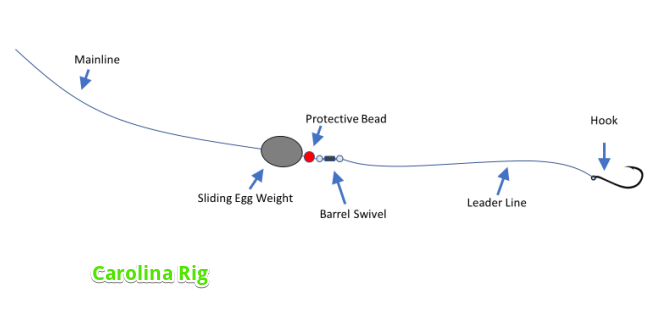
- Jigging: If you’re not having any luck with the slow and steady retrieve, try jigging your bait. This involves pulling your rod tip up and down to create a bouncing motion. This can be especially effective when the fish are not actively feeding.
- Twitching: Another method you can try is twitching your bait. This involves giving your rod tip a quick twitch to make your bait move erratically. This can be effective when the fish are being picky and not taking your bait.
- Keep your fish in a bucket or cooler with ice. Surf perch are tasty and can be cooked in various ways, such as frying, baking, or grilling.
- Pay attention to the tides: The best fishing often occurs on an incoming tide, especially an hour or two before high tide. Some anglers also prefer fishing in low light conditions such as dawn, dusk, and overcast weather, particularly when these conditions coincide with the changing of the tides.
Best Locations for Surf Perch Fishing

Surf perch fishing is a popular activity along the coasts of California, Oregon, and Washington. There are many beaches to choose from, but some are better than others. Some of the best beaches for surf perch fishing are Pismo Beach, Morro Bay, Monterey Bay, and Half Moon Bay in California; Long Beach Peninsula, Westport, and Ocean Shores in Washington; and Seaside, Cannon Beach, and Tillamook Bay in Oregon.
Cannon Beach, Oregon
Cannon Beach is a popular tourist destination, but it’s also a great spot for surf perch fishing. The beach is long and wide, with plenty of room to spread out and fish. You can catch both redtail and striped surf perch here.
Horsfall Beach, Oregon
Horsfall Beach is located in the Oregon Dunes National Recreation Area. If you’re willing to walk a bit you’ll find plenty of room to fish and you can catch redtail, striped, and silver surf perch here.

Seal Rock, Oregon
Seal Rock is a small town located on the coast of Oregon. The beach here is known for its excellent surf fishing. You will find a good population of all three surf perch species here ready for your bait.
Gold Beach, Oregon
Gold Beach is a small town located on the southern coast of Oregon. The beach here is known for its surf fishing and it’s large population of redtail, striped, and silver surf perch.
Westport, Washington

Westport is a small fishing town on the coast of Washington. It’s known for its excellent surf perch fishing for redtail, striped, and silver surf perch.
Ilwaco, Long Beach PeninsulaWashington
Ilwaco is a small town located on the southern tip of the Long Beach Peninsula in Washington. The beaches along the peninsula are known for excellent surf fishing.
These are just a few of the better locations for surf perch fishing along the coasts of California, Oregon and Washington. Remember to check local regulations and obtain any necessary permits before you go fishing.
Surf Perch Conservation Efforts
When it comes to surf perch fishing, it is important to consider conservation efforts to ensure the sustainability of the species. Here are some things you can do to help conserve surf perch populations:
Handle with care: When handling surf perch, be gentle and avoid touching their gills or eyes. Wet your hands before handling them to prevent removing their protective slime layer, which can make them more susceptible to disease. If you need to remove the hook, use a pair of pliers or a hook remover to minimize the time the fish is out of the water.
Use barbless hooks: Barbless hooks make it easier to release fish without causing unnecessary harm. If you do use barbed hooks, be sure to remove them carefully to minimize damage to the fish.
Release the Fish Quickly: The longer the fish is out of the water, the more stress it will experience. Try to release the fish as quickly as possible. If the fish is tired and needs to recover before swimming away, hold it in the water and gently move it back and forth to help oxygenate its gills. Once the fish is strong enough to swim away on its own, release it gently back into the water.
Avoid overfishing: Don’t keep more fish than you need. When fishing for surf perch, it is important to practice catch and release fishing to help preserve the population of these fish.
Protect their habitat: Surf perch rely on healthy coastal ecosystems to survive. Do your part to reduce pollution and protect their habitat by properly disposing of trash, using eco-friendly products, and supporting conservation efforts.

Follow Local Fishing Regulations: Always check your local fishing regulations for legal seasons, catch limits, and guidelines for catch and release fishing. Some areas may have specific rules for handling and releasing fish, so it is important to be aware of these regulations before you start fishing.
By following these conservation efforts, you can help ensure the sustainability of surf perch populations and enjoy this underutilized fishery for years to come.
Surf Perch Fishing Safety
When fishing for surf perch, or any outdoor activity, it’s important to prioritize safety to ensure a successful and enjoyable and safe experience. Here are some safety measures you should keep in mind when fishing for surf perch:
Check the Weather and Tides: Before heading out to fish, check the weather and tide conditions. Strong winds, high waves, and heavy rain can make fishing conditions dangerous. Additionally, tides can change quickly and unexpectedly, so it’s important to be aware of the tide schedule to avoid getting stranded or caught in a dangerous situation.
Wear Proper Gear: Wearing the right gear can make a big difference in your safety and comfort while fishing. A life jacket is always recommended, especially if you plan on fishing in deep water or rough conditions. Additionally, wearing non-slip shoes or boots can help prevent slips and falls on wet or slippery rocks.
Be Prepared for Emergencies: In case of an emergency, it’s important to have a first aid kit and a charged cell phone with you. Make sure to know the location of the nearest emergency services and have a plan in case of an emergency.
By following these safety measures, you can ensure a safe and enjoyable surf perch fishing trip.
How to Clean and Cook Surf Perch
Surf perch are popular among anglers and seafood lovers for their mild flavor and firm texture. Here are some steps on how to clean and cook surf perch:
Cleaning Surf Perch
To clean surf perch, you need a sharp knife, a cutting board, and a bowl of cold water.
- Rinse the fish under running water and pat them dry with paper towels.
- Cut off the head and tail of the fish, then make a slit along the belly from the anus to the gills.
- Remove the guts and rinse the cavity well.
- Cut along one side of the backbone, starting from the head end, and separate the fillet from the bones.
- Repeat on the other side. You can also remove the skin by sliding the knife between the flesh and the skin, or leave it on if you prefer.
- Rinse the fillets again and place them in a bowl of cold water with some salt and lemon juice to keep them fresh.
Cooking Surf Perch
To cook surf perch, you can choose from different methods, such as grilling, frying, baking, or steaming. One simple way is to pan-fry them with some butter, garlic, parsley, salt, and pepper.
- Heat some butter in a large skillet over medium-high heat.
- Season the fillets with salt and pepper and sprinkle some flour over them.
- Shake off any excess flour and place them in the hot skillet.
- Cook for about 3 minutes per side, or until golden and flaky.
- Transfer to a platter and keep warm.
- In the same skillet, add some more butter, garlic, parsley, and lemon juice.
- Cook for a few minutes, stirring occasionally, until fragrant and bubbly.
- Pour the sauce over the fillets and serve with your favorite side dish.

Surf Perch Fishing Frequently Asked Questions

What is the best line for surf perch fishing?
The best line for surf perch fishing is a braided line with a test weight of 6-10 pounds. Braided lines are durable and have a small diameter, allowing you to cast further and feel even the slightest bites. Fluorocarbon lines are also a good choice as they are nearly invisible underwater, but they can be more expensive.
What is the ideal surf perch hook size?
The ideal hook size for surf perch fishing is a size 6 or 8. These hooks are small enough to avoid scaring off the fish, but large enough to hook them effectively. Make sure to use barbless hooks to make catch-and-release easier.
How do you fish for surf perch?
To fish for surf perch, cast your line out into the surf zone and let the bait sink to the bottom. Wait for a bite and then reel in slowly, keeping tension on the line. Surf perch are bottom feeders, so keep the bait near the ocean floor. You can also try jigging your bait up and down to attract more bites.
What is the best bait for surf perch?
The best bait for surf perch fishing is sand crabs, bloodworms, or small pieces of shrimp. You can also use artificial lures such as grubs, soft plastics, or small jigs. Try using a variety of baits to see what the surf perch are biting on that day.
What month is best for surf perch fishing?
Surf perch can be caught year-round, but the best months for surf perch fishing are from late spring to early fall. During this time, the water temperature is warmer, and the surf perch are more active. However, surf perch can still be caught in the winter months if you are willing to brave the cold water.
Are surf perch good to eat?
Yes, surf perch is good to eat. They have a mild, sweet flavor and a firm, flaky texture. Make sure to clean and gut the fish before cooking. You can bake, fry, or grill surf perch, and they pair well with a variety of seasonings and sauces.
Try Your Hand at Some West Coast Perch Jerkin’
If you live on the west coast, in the states of California, Oregon, or Washington, and you’re thinking of trying your hand at surf fishing, surf perch are a great place to start. With some basic equipment and knowledge, you can have a fun surf perch fishing trip, enjoy the outdoors and catch some delicious fish.
There are lots of them, they are aggressive and readily take a variety of baits and artificials. And, with the right tackle, can be a blast to catch.
Wherever you decide to try surf perch fishing, look up the local bait and tackle shops, Facebook groups, online fishing forums, or even the local surf angler, to get the latest Intel on how, where and what to use to catch surf perch.
As always, stay safe, enjoy the journey and please try to leave it cleaner than you found it. If you have any comments, questions, ideas or suggestions please leave them in the comment section below and I’ll get back to you asap.
You can follow us on Facebook: Rex The Beach Angler, Instagram: thebeachangler7, Twitter: @AnglerBeach, and YouTube: Man Art Creations.

P.S. – Thanks so much for checking out our blog we really appreciate it. Just so you know, we may receive a commission if you click on some of the links that appear on our site. This helps us keep our content free and up-to-date for everyone. We appreciate your support!
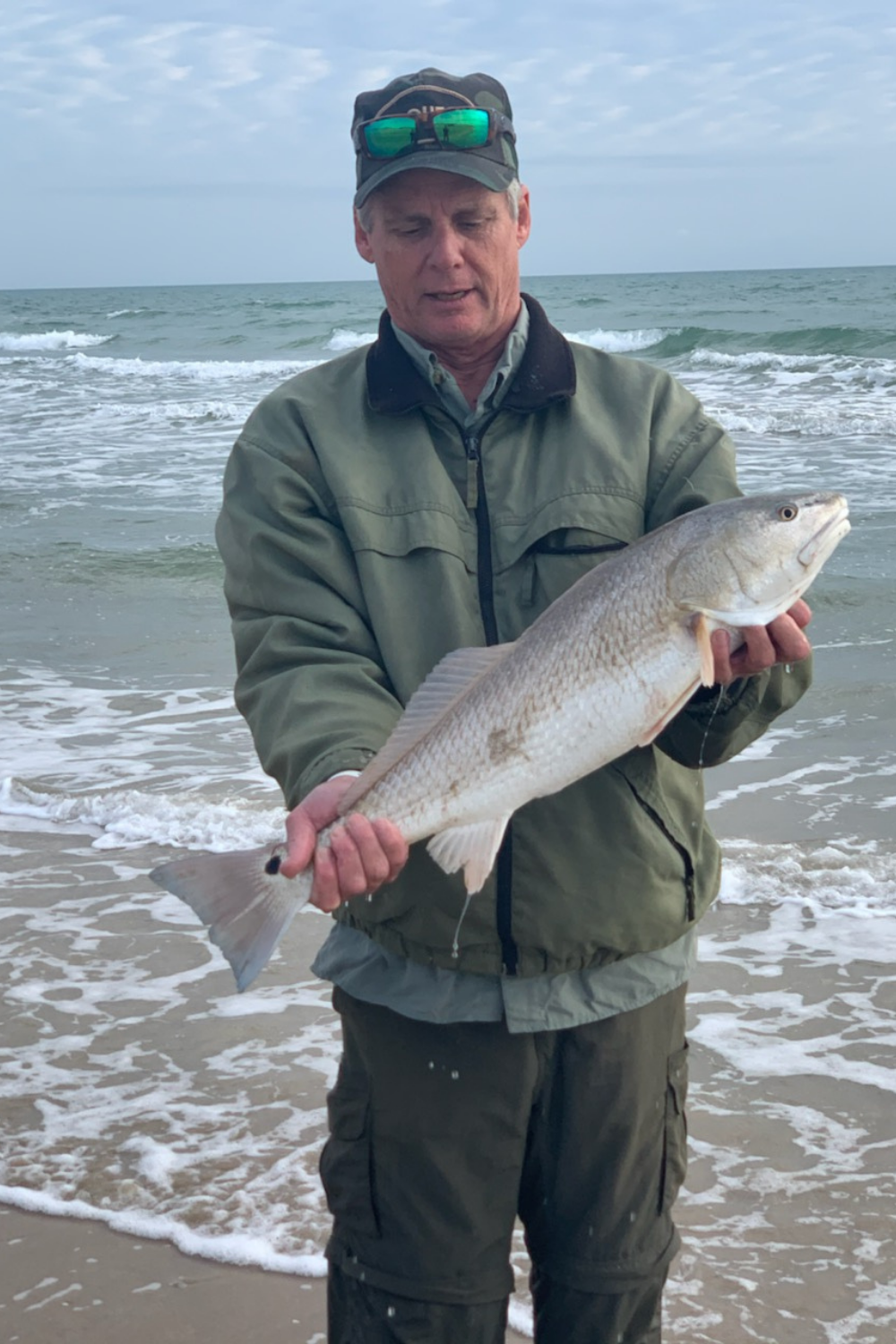
A life long surf fisherman with 50+ years of experience, I am also an avid hunter and outdoorsman. I will be sharing my passion for the outdoors with you so be prepared for hunting, fishing, camping, hiking and more. Along with gear reviews and the latest trends and innovations in the outdoor industry.
